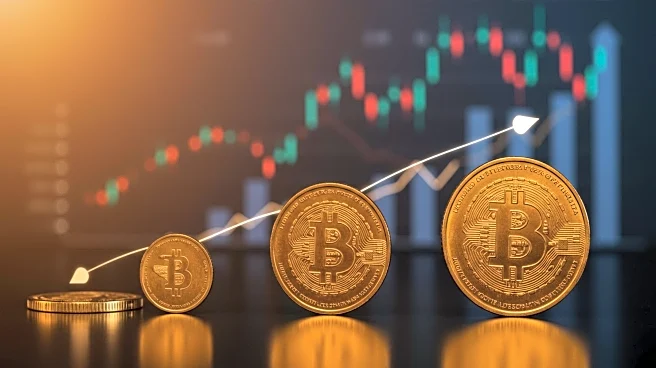What's Happening?
Gold futures experienced a modest recovery, ending a two-day losing streak as investors reacted to the July Consumer Price Index report. The Bureau of Labor Statistics released inflation data showing a nuanced picture of price pressures in the U.S. economy. While the year-over-year headline inflation was below economists' forecasts, core inflation exceeded expectations at 3.1%, indicating persistent underlying price pressures. This data has led markets to anticipate a potential easing of monetary policy by the Federal Reserve, with a 94.4% probability of a 25-basis point rate cut at the September Federal Open Market Committee meeting. The U.S. dollar weakened, declining 0.43% on the dollar index, which contributed to gold's recovery due to the inverse relationship between the dollar and dollar-denominated commodities.
Why It's Important?
The potential rate cut by the Federal Reserve is significant as it could lower opportunity costs for holding non-yielding assets like gold, making them more attractive to investors. Additionally, a weaker dollar can lead to increased demand for gold as a hedge against currency debasement. This development is crucial for investors and financial markets, as it may influence investment strategies and portfolio allocations. The sensitivity of gold prices to interest rate expectations and dollar movements highlights the interconnectedness of monetary policy and commodity markets, impacting stakeholders ranging from individual investors to large financial institutions.
What's Next?
As the Federal Reserve approaches its September meeting, investors will closely monitor any signals regarding monetary policy changes. A rate cut could further bolster gold prices, while any deviation from expected policy actions might lead to market volatility. Stakeholders, including investors and financial analysts, will need to assess the evolving economic indicators and adjust their strategies accordingly. The broader implications for the U.S. economy and global financial markets will depend on the Federal Reserve's actions and the subsequent reactions from various economic sectors.












